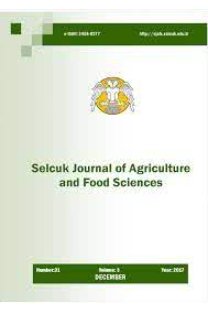The Use of Different Waste Mulch Materials Against Weeds Which are Problems in Tomato (Solanum lycopersicum L.) Cultivation
The Use of Different Waste Mulch Materials Against Weeds Which are Problems in Tomato (Solanum lycopersicum L.) Cultivation
This study was carried out in two different locations (L1: Yüzbaşılar village and L2: TUAM (Iğdır University Agricultural Application and Research Center) in 2020 to determine the effect of different waste mulch materials on weed control and tomato yield. In the study, five different mulch materials (tree of heaven leaves, fine sawdust, wood chips, shredded paper and sheep wool) were used.
Each plot has weedy and weed-free control plots. The effects of mulching on weeding suppression, weed dry weight, yield (kg/da), fruit weight (gr) and number of fruit per plant were investigated. Three counts were made to determine the weed density in the plots. As a result of the study, a total of 17 weed species belonging to 9 families were determined in the experimental areas. As a result
of the counts, it was observed that Sorghum halepense L., Convolvulus arvensis L. and Xanthium strumarium L. weeds emerged the most in the plots where the mulch materials were applied. Depending on the location, the lowest density among the weed density counts was obtained from the paper plots. In the study, the lowest average weed dry weight among the mulch materials was shredded paper (L1: 97.63; L2: 73.12 gr/m2), the highest average was tree of heaven (L1: 191.87; L2: 165.27 gr/m2) plots. As a result of the study, the best results in tomato yield (L1: 6.078.50; L2: 6.807.87 kg/da) and fruit weight (L1: 142.67; L2: 147.35 gr)) were obtained in the shredded paper mulch applied plots. The highest number of fruits per plant was obtained in the use of wood chips (L1: 45.774.83 pieces) and tree of heaven leaves (L2: 46.627.41 pieces). The fact that mulch applications give better results than control groups suggests that mulches will be much more beneficial for controlling weeds and improving fruit yield and quality.
